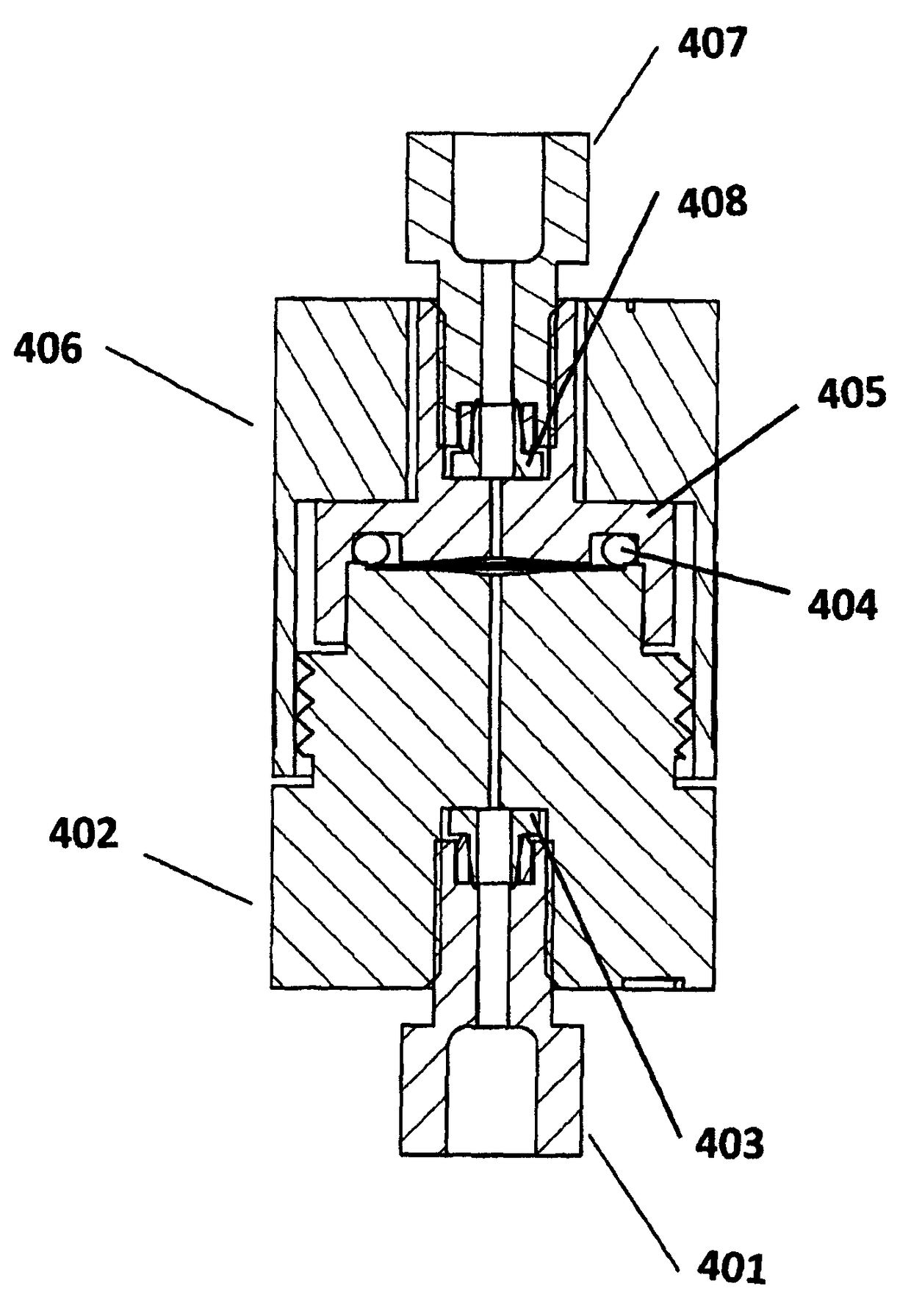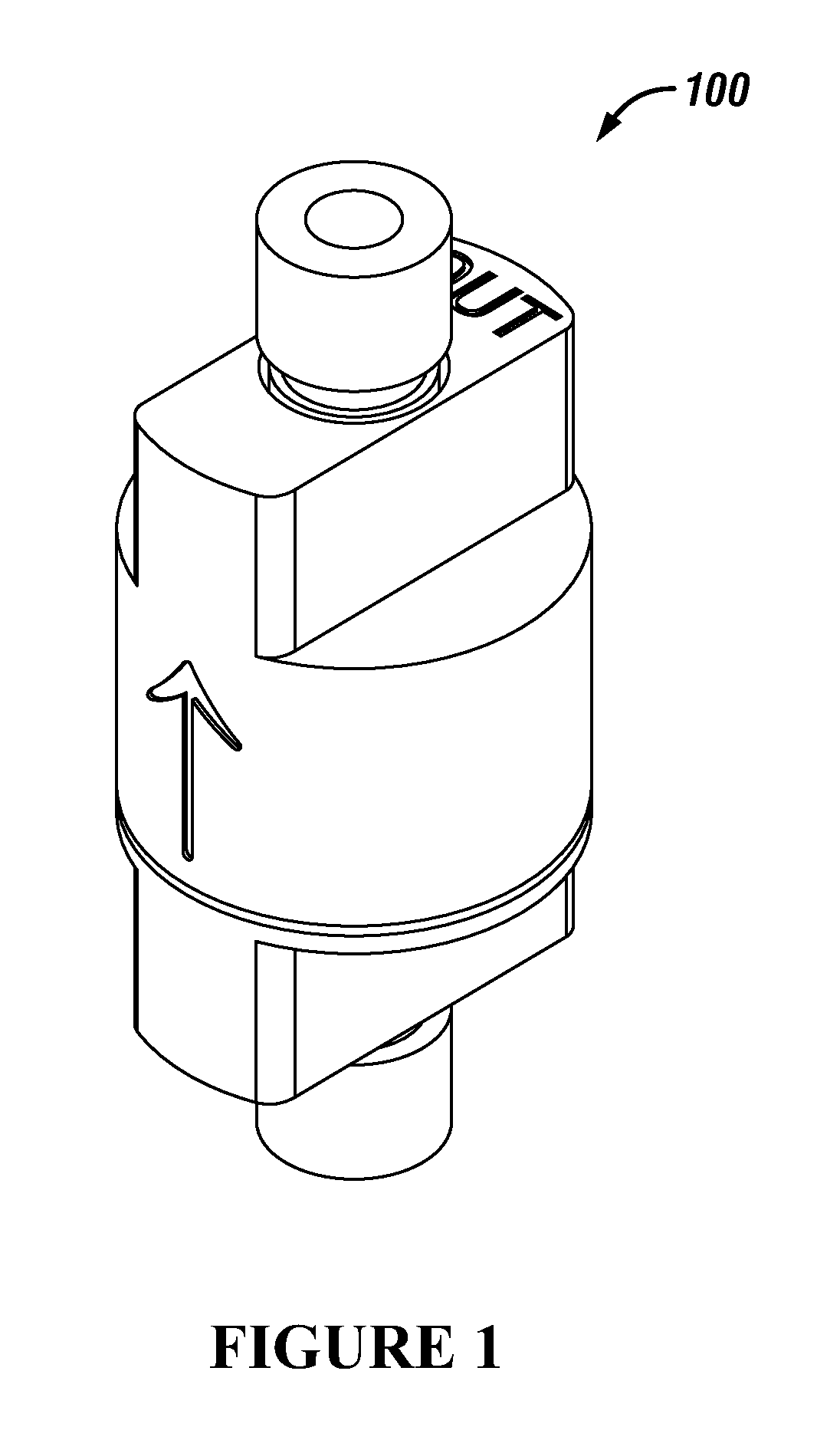Low volume in-line filtration method for evaluation of asphaltenes for hydrocarbon-containing feedstock
a hydrocarbon-containing feedstock and asphaltene technology, which is applied in the field of low-volume in-line filtration method for evaluation of asphaltenes for hydrocarbon-containing feedstocks, can solve the problems of asphaltene precipitation, limited efficiency of converting such hydrocarbon materials, and increase the tendency of asphaltenes to agglomerate into larger particles, so as to improve the sharpness and symmetry of peaks, and improve the stability and solubility of asphaltenes
- Summary
- Abstract
- Description
- Claims
- Application Information
AI Technical Summary
Benefits of technology
Problems solved by technology
Method used
Image
Examples
example 1
[0117]Peak Comparison between on-column and in-line filtration devices.
[0118]A solution of asphaltenes (extracted from Venezuelan crude oil using ASTM D6560) was prepared by dissolving 0.0100 g of the material in 10 mL of methylene chloride. The solution was tested using two different setups:
[0119]Setup A. This setup consisted of a HPLC system composed of a HP Series 1100 chromatograph and an Alltech ELSD 2000 detector using a 10 mm i.d×100 mm stain steel column. The packing material of the column was polytetrafluoroethylene-packed (PTFE) 40-60 mesh.
[0120]Setup B. This setup consisted of the same as setup A except that the column was replaced with a low volume filter containing a 0.5 micron stainless steel porous filter element purchased from Restek (cat. No. 24993), having a volume of 5 μL volume (see as http: / / www.restek.com / catalog / view / 10607 as retrieved on Jun. 18, 2014),
[0121]For both setups A and B, 4 microliters of the solution was injected into each system using a heptane m...
example 2
[0124]Calibration Curves
[0125]A solution of asphaltenes (extracted from Venezuelan crude oil using ASTM D6560) was prepared by dissolving 0.0100 g of the asphaltenes in 10 mL of methylene chloride. Different volumes of solution (i.e., 1 microliter, 2 microliter, 5 microliters, and 8 microliters) were passed through the low volume filter described in Example 1 using a heptane mobile phase at a flow rate of 2 mL / min. The maltenes (heptane solubles) first eluted from the column or filter. Next, the precipitated asphaltenes captured in the filter were eluted as follows: after 2 min of the injection of the sample, the mobile phase was switched to 90 / 10 methylene chloride / methanol blend and after 4 min was switched back to 100% heptane. The asphaltenes were quantified using an ELSD equipped with a light-scattering photometer as in Example 1. The area A corresponding to the asphaltenes signal was determined for each injection volume and related to the asphaltene masses M according to:
log M...
example 3
[0130]Repeatability Comparison between on-column and in-line filtration devices.
[0131]Solutions of a crude oil from Venezuela (0.1000 g in 10 mL of methylene chloride) were repeatedly (20 times) prepared and tested for asphaltene content during a month using the setups A and B of Example 1.
[0132]Four microliters of solution were injected into the system using a heptane mobile phase at a flow rate of 4 mL / min. The maltenes (heptane solubles) first eluted from the column or filter. Next, the precipitated asphaltenes captured in the column (setup A) or in the filter (setup B) were eluted as follows: after 8 min of the injection of the sample, the mobile phase was switched to 90 / 10 methylene chloride / methanol blend at a flow rate of 4 mL / min and after 12 min, was switched back to 100% heptane at a flow rate of 4 mL / min.
[0133]For Setup B the procedure was similar to Setup A, except that a flow rate of 2 mL / min was used to save solvent. For Setup A, a flow rate of 2 mL / min will decrease c...
PUM
| Property | Measurement | Unit |
|---|---|---|
| volume | aaaaa | aaaaa |
| solubility parameter | aaaaa | aaaaa |
| solubility parameter | aaaaa | aaaaa |
Abstract
Description
Claims
Application Information
 Login to View More
Login to View More - R&D
- Intellectual Property
- Life Sciences
- Materials
- Tech Scout
- Unparalleled Data Quality
- Higher Quality Content
- 60% Fewer Hallucinations
Browse by: Latest US Patents, China's latest patents, Technical Efficacy Thesaurus, Application Domain, Technology Topic, Popular Technical Reports.
© 2025 PatSnap. All rights reserved.Legal|Privacy policy|Modern Slavery Act Transparency Statement|Sitemap|About US| Contact US: help@patsnap.com



